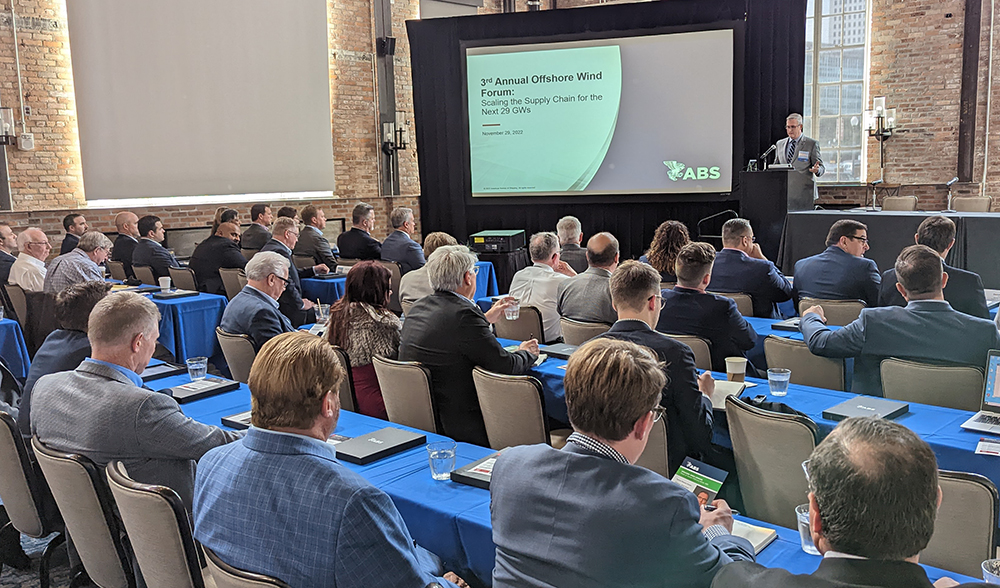Offshore Wind Forum details how to address the challenges of the next 29 GWs

WorkBoat photo
With less than one gigawatt (GW) of U.S. offshore wind energy committed with two projects in operation and two others under construction, the Biden adminstration's goal of deploying 30 gigawatts (GW) of offshore wind power by 2030 seems overly ambitious.
Hitting this “30 by 30” goal would require the installation of multiple turbines every week starting in 2023. What will enabling technology at this scale actually look like? How will developments related to financing and the workforce affect what’s possible? These topics and others were explored at the American Bureau of Shipping's third annual Offshore Wind Forum held in New Orleans Nov. 30.
Greg Lennon, head of global offshore wind at ABS, opened the event by discussing the physical scale of the technology and the engineering challenges that lie ahead. With each nacelle component (450-500 tons in weight) installed at about the height of the Washington Monument, the type of engineering that is being collectively enabled with offshore wind farms has previously never been possible. Such developments require coordination and cooperation at unprecedented levels, spanning across organizations, industries and entire regions. Sorting out challenges that are related to market and financing opportunities, clean technology and the workforce are essential to enabling this kind of progress.
During the forum's “Vessel Market and Financing Opportunities” session, panelists discussed how the increasing demands of the offshore industry are changing financing considerations. What does success in offshore wind really look like, and how is that connected to or distinct from similar traction in the oil and gas market? How can we take the steps to address the risk with these certain types of investments?
With current interest rates at 7%-8% and other factors, vessels cannot be built on spec. Retrofits and vessel repurposing can help address CTV and SOV needs and help avoid a total reliance on newbuilds that are much more costly.
The “Clean Technology and Sustainability” panel highlighted the 30 by 30 goal. To get to 110 GW by 2050, new systems and technologies need to be utilized in a way that shapes the present and future of the sector.
The concept of what clean technology really looks like in terms of fuel was discussed, with participants agreeing that there is no perfect solution. There’s a lot of talk about the future of fuel but not what makes sense today. That future will be built on choices that are being made today that aren’t always about the technology. Instead, infrastructure and financing are driving these decisions.
Issues related to shore charging, battery capability and training were also discussed. “The Maritime Workforce Challenges and the Scale Up” session saw numerous industry and academic experts explore what it means to find, retain and develop the workforce that will define the present and future of the industry.
Panelists discussed how addressing workforce challenges can be a matter of awareness, retraining the existing workforce, nurturing new talent and cultivating a long-term perspective. Much of that is connected to the transferring of skills across industries and demographics. The panel also highlighted some specific action items for individual organizations and stakeholders that will help drive interest and growth across the sector. There is no easy answer but working with local communities can pay dividends in the short and long term.
U.S. offshore wind market is still in its early stages. Challenges related to financing, sustainability and the workforce aren’t specific to the offshore wind sector, but addressing them with new approaches and ways of thinking will go a long way toward ensuring that the next 29 GW is achieved.






